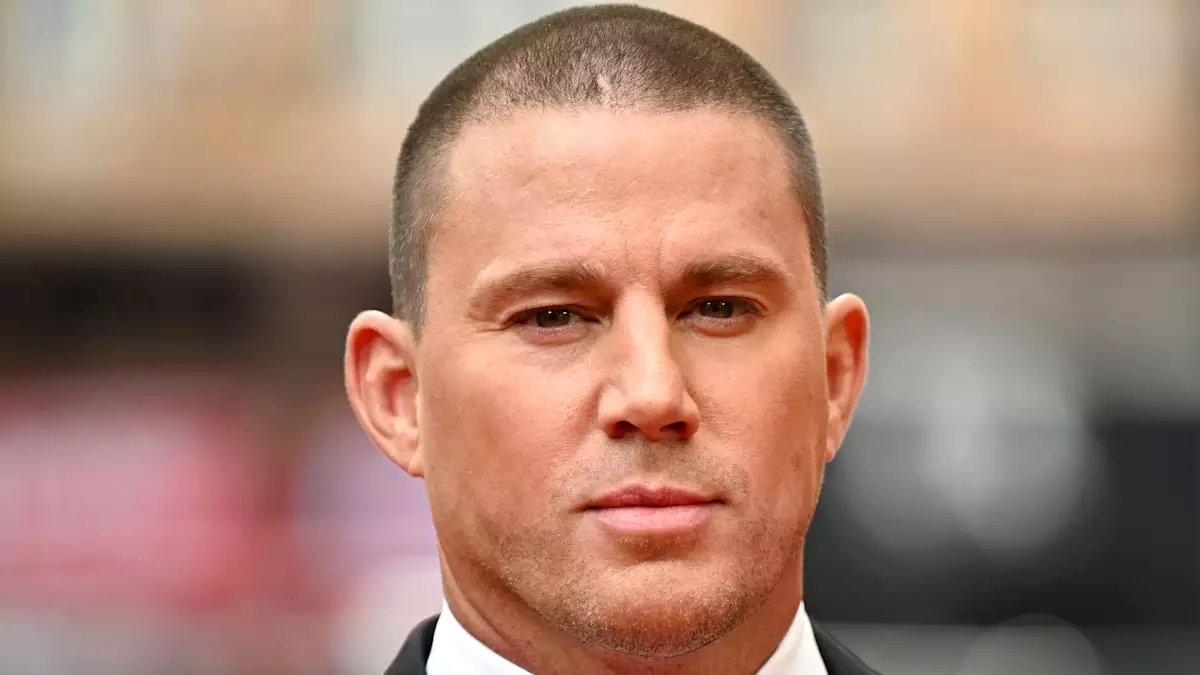In an industry where aesthetics and physicality can define a career, Channing Tatum stands out for his willingness to embrace extreme body transformations. This trend is not merely a passage but a grueling rite of passage for many actors. The powerful and often staggering fluctuations in weight for roles may elicit awe, yet they present profound physical and mental challenges. Tatum’s recent candid social media posts reveal the significant toll this lifestyle takes, juxtaposing his sculpted physique with more robust appearances in a visual diary of his creative journey. His candid admissions shed light on a vital aspect of Hollywood: behind every role is an unglamorous truth of hardship and sacrifice.
The Human Experience Beyond the Screen
Tatum’s approach has resonated with fans and industry peers alike, articulating a sentiment that goes beyond visual appeal. His light-hearted commentary in one photo, “We back up! Lol,” introduces an intriguing contrast between humor and the seriousness of his experiences. The stark visual shifts—ranging from a well-defined 205 pounds to a more substantial 235 before shedding down to a lean 172—illustrate the extent to which he has pushed his body. Each image is a testament to his commitment to storytelling and the physical embodiment of diverse characters. It encapsulates an essential truth: the journey to embody another persona often leads to a raw confrontation with one’s self-image, physical limits, and resilience.
Community and Support Systems
Tatum expressed profound gratitude towards his support network, acknowledging his chef, nutritionist, and trainer as fellow navigators of this often isolating journey. This acknowledgment reveals a vital aspect of extreme physical transformation—the importance of having a committed team. The solitary journey of weight fluctuation is often daunting; Tatum thankfully recognizes those who enable him to navigate this treacherous path. It is a reminder that while the spotlight shines on individual prowess, real success often hinges on collaborative efforts, shared experiences, and emotional support.
The Balance Between Art and Health
Despite the eager willingness to embrace both extremes in physique, Tatum’s reflections hint at the intricate battle between wanting to give everything for art and maintaining one’s health. His humorous assertion that he “won’t be doing anymore fat roles” highlights a moment of self-awareness that is pivotal in an industry fraught with daunting expectations. The glamorous façade of Hollywood often obscures the physical costs associated with these dramatic changes. This tension between artistic ambition and physical well-being invites a nuanced conversation around how far performers should go in the name of their craft. It raises an important dialogue about the sustainability of such transformations, particularly the mental and physical toll they can inflict.
Hollywood’s Weight Wrestling: A Broader Perspective
As Tatum’s transformations evoke comparisons to Christian Bale—whose own drastic shifts have become legendary—an essential narrative emerges around the normalize nature of such high-stakes body works. Christian Bale’s reported health concerns that arose from rapid weight changes remind us of the risks that come with the territory. Tatum’s journey is modern yet timeless; it reflects a pattern filmmakers are increasingly willing to explore, even as it necessitates serious consideration concerning performers’ health. The industry often celebrates these transformations, yet collective introspection is urgently needed to ensure that artists do not sacrifice their physicality for a role, prioritizing health over aesthetic.
The Psychological Toll of Body Image on Artists
The psychological implications of constant body metamorphosis are suffused throughout Tatum’s narrative. In the age of social media, scrutiny is incessant, yet actors like Tatum emerge as trailblazers by expressing vulnerability. They challenge conventional standards of masculinity and beauty, igniting conversations about self-worth and the realities of physical appearance in an image-obsessed culture. Tatum’s candid reflections allow fans to empathize with the complexity of self-image in a visually driven industry, where physical form becomes synonymous with personal value.
This continuous cycle of transformation and reinvention showcases the dynamic nature of performance art in Hollywood. As actors like Channing Tatum invest in their craft, they remind us that every role comes with its unique set of sacrifices, pushing the boundaries of physicality and self-identity. In the end, while Hollywood often glorifies visual extremes, it is the underlying narrative of resilience that truly defines these journeys.

